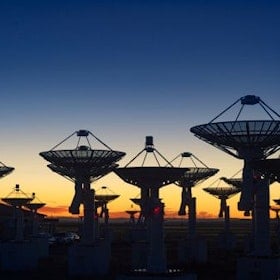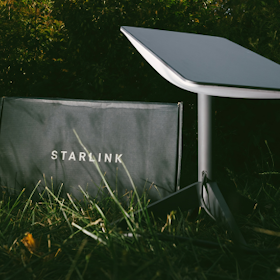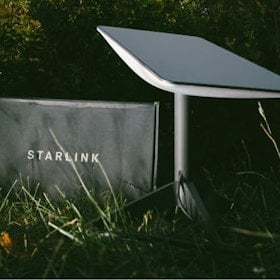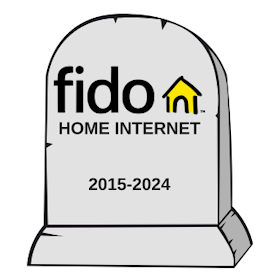
A mobile hotspot, or tethering, refers to using your cell phone as a router to connect other devices to the internet using cellular data. Using your phone as a mobile hotspot is usually as simple as turning the feature on in your phone's settings. Mobile hotspots are a great way to stay connected while on the go.
Large carriers like the Big Three (Rogers, Bell, and Telus) and smaller ones like Fido, Lucky Mobile, and Virgin Plus offer data that can be repurposed for mobile hotspot usage. In fact, almost every Canadian cell phone carrier allows you to use your phone’s built-in mobile hotspot with your plan’s data for no extra charge.
What Is a Mobile Hotspot?
Simply put, a mobile hotspot, also known as tethering, gives you the ability to connect devices to the internet using cellular data either through a mobile hotspot device or even your cell phone. You can think of it as using your mobile device as a Wi-Fi router to connect other devices.
Mobile hotspots have been primarily used for connecting to the internet when away from other sources like home or office networks. However, many people are now using mobile hotspots to replace home internet altogether.
Watch our "Wi-Fi vs. Hotspot" video
Subscribe to our YouTube channel for more videos like this one! Learn about switching providers, scoring the best unlimited data deals, and more.
How fast is a mobile hotspot?
Generally speaking, mobile hotspot internet data is as fast as your phone’s 4G LTE data—after all, both use the same mobile network. However, your phone may not be putting out the best signals which could slow things down a little. Still, if you find that browsing the internet or doing other tasks that require an internet connection is pretty fast on your phone’s cellular data, you should have a pretty similar experience when using mobile hotspot.
If you get 5G coverage on your phone, your hotspot connection will also be 5G. If you don’t currently have 5G, your mobile hotspot will run on 3G or 4G LTE data. There are mobile hotspot devices that support 5G connectivity as well.
How to Use Your Phone as a Mobile Hotspot
In the past, you had to have a separate dedicated device to use as a mobile hotspot. Nowadays, most of the current popular smartphones, including all recent iPhones and most current Android phones, are capable of acting as your hotspot device. This means you can connect things like your laptop to the same mobile data that your smartphone uses.
Enabling your mobile hotspot varies by phone and operating system, but typically it just requires you to go into your phone’s settings and turn your mobile hotspot on. Most phones will give your hotspot network a name (often “My Phone” or “[your name]’s iPhone”) and a password. Typically, you can customize these. Once you have the hotspot turned on, just go to the device you want to connect and choose the hotspot network and enter in the password, just like you would when connecting to other WiFi networks.
Using a Dedicated Hotspot Device
Dedicated hotspot devices (that is, not smartphones) come in various shapes in sizes. Some are USB sticks that you just plug into your computer, and others look a lot like small Wi-Fi routers.
Why use a mobile hotspot device rather than just using your phone? Hotspot devices tend to be a little more powerful than your phone when it comes to connecting other devices. This means you might get faster speeds, and you’ll likely be able to connect more devices to the hotspot. Also, consider that using your phone as a mobile hotspot could drain the battery quicker than you’d like. Having a dedicated mobile hotspot could solve that problem.
Rogers, Bell, Telus, and Sasktel all sell mobile hotspot devices. You can expect to pay anywhere from a few dollars to around $50/month for each one. Additionally, you’ll have to pay an ongoing monthly data fee for the device.
Mobile Hotspot Data
Tethering is a great way to stay connected while you are on the go, but remember while you’re connected to a mobile hotspot via your smartphone, you are using data—all of which is counted against your phone’s overall data plan, unless your plan offers a specific allotment of mobile hotspot data outside of your overall allowance. Some carriers charge overages if you've exceeded their monthly data allowances.
If you use a separate hotspot device, you’ll have to get a separate mobile data plan for that device. Most carriers in Canada offer data-only mobile internet plans for dedicated mobile hotspot devices. For example, SaskTel offers data-only plans for as low as $30/month for 5GB of data. However, you must be a resident of Saskatchewan to take advantage of this plan.
Other carriers, including Rogers, have special deals specifically for hotspots if you have an unlimited data plan. For $10/month, Rogers’ customers can share their mobile data with a hotspot device, but you’ll also have to pay for it separately.
Can Mobile Hotspot Replace My Home Internet?
Can you cancel your internet plan and just use your phone to power your home internet? This really depends on how much you rely on Wi-Fi. Remember, that data usage goes against your plan’s limit. If you are constantly on the internet, and if you rely on it for work, mobile hotspot is probably not the best option for you, especially if you are considering using your phone as your hotspot device.
However, if you use the internet very sparingly, and you find that you never get close to your cell phone plan’s data limit, you might find value in just getting rid of your home internet and using your phone for all your connectivity needs. Just be sure to do an assessment of your internet usage and judge if your cell phone plan’s limits are adequate.
If you are thinking of replacing your home internet with a dedicated hotspot device with its own data plan, just consider that mobile internet plans are typically more expensive than standard wired home internet options and have more restrictive data limits. A dedicated mobile hotspot device is usually not the best option for home internet.
Best Mobile Data Plans for Hotspots
The biggest mobile providers in Canada—Rogers, Bell, and Telus—have cell phone plans that allow for mobile hotspot usage at no additional cost. However, data isn’t set aside specifically for hotspot use, which is a common theme in the telecom market in Canada. Instead, data pulls directly from your plan’s data pack. Hotspots use a lot of data, so we’ve selected unlimited data plans from the largest carriers as the best options for hotspot use.
Telus hotspot plans
Telus has the largest 4G LTE network in Canada, making it our number one choice for mobile data plans for hotspot use. Telus’ highest data plan, the Unlimited 150 5G+ plan, comes with 150GB of premium data at 1Gbps for $95/month. If you exceed the plan's data cap, your speeds will slow to 512Kbps, but you’ll get unlimited data that you can use via your hotspot.
Telus also has hotspot devices that can connect up to 30 devices simultaneously. They range from $10 to $20/month. You’ll need a data plan to go along with it, and those start at $60/month for 5GB and go up to $135/month for 50GB.
Bell hotspot plans
Bell’s largest data option is its $105/month Ultimate 150 plan. As its name indicates, Ultimate 150 comes with 150GB of data at 5G speeds. If you go over your plan’s data allowance, speeds will slow to 512Kbps. Select plans also get 24 months of Crave Mobile so you can stream your favorite show while using your mobile hotspot.
Bell has hotspot devices that range in price from $3.39/month to $33.46/month. Hotspot plans for the devices also vary, from 100MB of data for $10/month to 50GB of data for $150/month.
Rogers hotspot plans
Rogers’ largest data plan, Infinite Premium, comes with 150GB of data at speeds of up to 1Gbps for $75/mth. Lower-priced plans start at for 30GB, and you can also get six months of Disney+ with select Infinite plans.
But suppose you want to connect numerous devices on a Wi-Fi network. In that case, Rogers offers standalone hotspot devices for around $10/month. Dedicated mobile hotspot plans range from $10 for 100MB to $60/month for 5GB.
Plans with hotspots from other carriers
Many other smaller carriers offer hotspots as part of most plans, including postpaid and prepaid options. Plans fluctuate in price based on data allotments, location, and brand. Check out some of the most popular plans with a hotspot included below.
Mobile Hotspots: FAQs
Related Articles
Find Better Internet and Phone Plans
Hundreds of internet plans unpacked. All the facts. No surprises.
Internet Providers by Provinces and Territories
- Internet in Alberta
- Internet in British Columbia
- Internet in Manitoba
- Internet in New Brunswick
- Internet in Newfoundland and Labrador
- Internet in Northwest Territories
- Internet in Nova Scotia
- Internet in Nunavut
- Internet in Ontario
- Internet in Prince Edward Island
- Internet in Quebec
- Internet in Saskatchewan
- Internet in Yukon Territory


















































